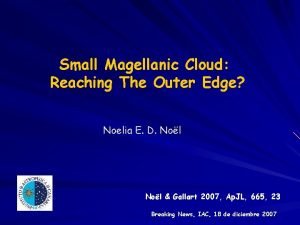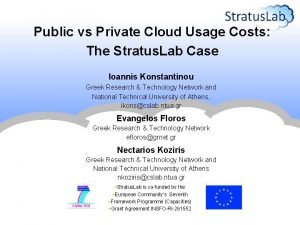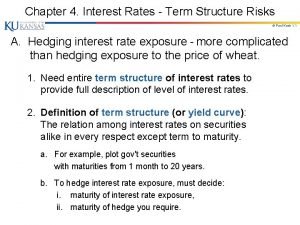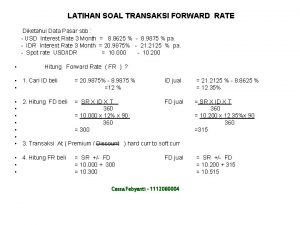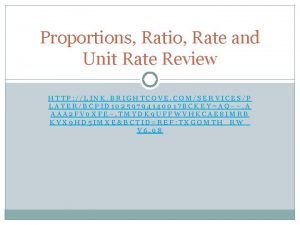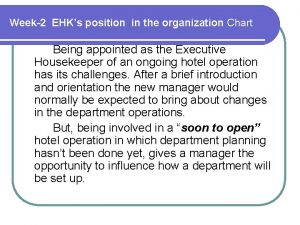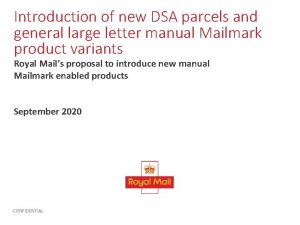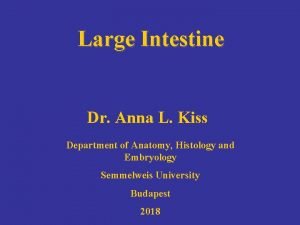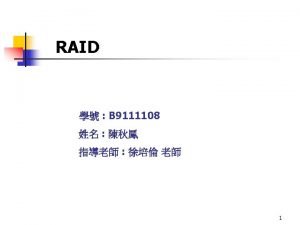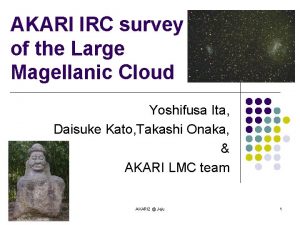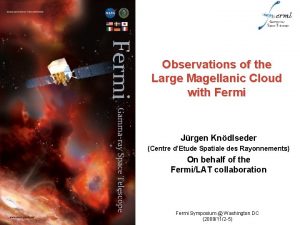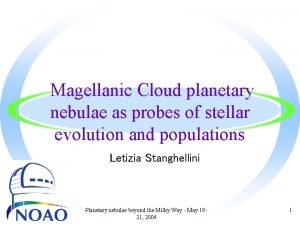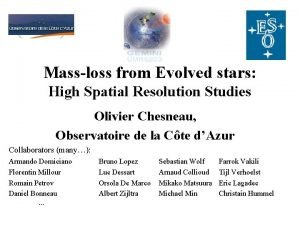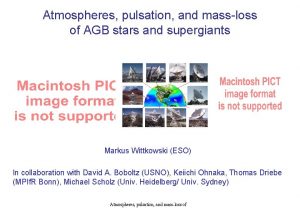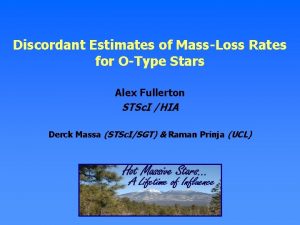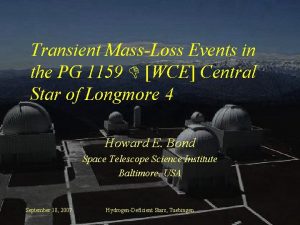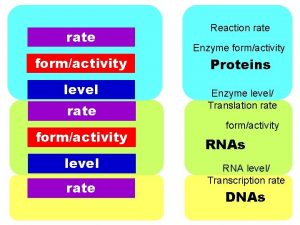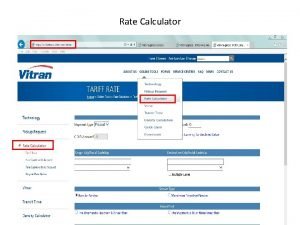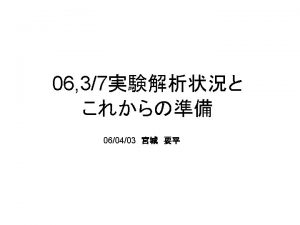Large Magellanic Cloud CO massloss rate of redsupergiants

















- Slides: 17

Large Magellanic Cloud CO mass-loss rate of red-supergiants at low metallicity Mikako Matsuura (Cardiff University) Benjamin Sargent, Bruce Swinyard, Jeremy Yates, P. Royer, M. J. Barlow, Martha Boyer, L. Decin, Theo Khouri, Margaret Meixner, Jacco Th. van Loon, Paul Woods

How does metallicity effect on mass-loss rate? • Galaxies have wide range of metallicities • How does metal content affect stellar-wind of redsupergiants (RSGs) and AGB stars? – Stellar wind (super wind): driven by radiation pressure on dust grains O – Dust grains are made of metals Mg Fe – Theoretical prediction: ‘Mass-loss rate is lower at low metallicity at a given Bowen & Willson (1991, Ap. J 375, L 53) luminosity’ Si

Testing hypothesis • Galaxies have wide range of metallicities • Milky Way : metallicity ~Z • Large Magellanic Cloud – Metallicity~ 1/2 Z – Distance = 50 kpc – Constituting stars are well resolved – LMC: ideal site to test how metallicities affect mass-loss rate – Targeting on two red-supergiants in the LMC

Observations Herschel SPIRE FTS + PACS spectrometer Herschel SPIRE FTS spectrum J=7 -6 CO H 2 O VY CMa IRAS 05280 -6910 J=13 -12 Galactic red-supergiant LMC red-supergiant 8 CO and 15 H 2 O lines detected CO J=6 -5 to J=13 -12

Observations Herschel SPIRE FTS + PACS spectrometer Herschel PACS spectra IRAS 05280 -6910 WOH G 64

Analysis of CO : rotational diagramme CO line intensity Overall CO intensity reflects the CO density LMC RSG, IRAS 05280 -6910 – stronger CO lines than Galactic RSG, VY CMa CO transitions

Two different methods of mass-loss rate measurements in AGB stars and RSGs • Mass-loss rate from dust excess • Mass-loss rate from CO emissions

Estimating dust mass-loss rate Fitting the SED with dust radiative transfer code (Dusty; Ivezic & Elitzur 1997) IRAS 05280− 6910 (LMC RSG) Key parameters • Mass-loss rate : 3 x 10 -4 M yr-1 (converted to gas-mass loss rate) • Gas-to-dust ratio : 500 • Limited by available mass of refractory elements • Higher than Galactic value

Estimating gas mass-loss rate CO rotational diagramme Modelling with non-LTE radiative transfer code (SMMOL; Rawlings & Yates 2001) Key parameters for IRAS 05280 (LMC RSG) • Mass-loss rate : 3 x 10 -4 M yr-1 • As dust SED • CO/H 2 ratio: 2. 7 x 10 -4 • Limited by available C mass • Lower than Galactic value as metallicity is lower

Did we see metallicity effects on mass loss rate? IRAS 05280 (LMC RSG): 3 x 10 -4 M yr-1 WOH G 64 (LMC RSG): 2. 3 x 10 -4 M yr-1 (IR-SED; Ohnaka et al. 2008) VY CMa (Galactic RSG) 2 x 10 -4 M yr-1 W Hya (Galactic AGB) 1. 5 x 10 -7 M yr-1 No evidence of reduced mass-loss at LMC metallicity (half solar)

Results from dust & gas mass-loss rate estimates IRAS 05280 -6910 • High mass-loss rate – : 3 x 10 -4 M yr-1 • Did not find a reduced mass-loss rate at LMC (half solar metallicity) • Indirect metallicity effect – Assumed • CO / H 2 ratio • Gas-to-dust ratio – Scaled accordingly to metallicity • No metallicity dependence in CO/dust ratio

Instead of metallicity Luminosity is the key IRAS 05280 (LMC RSG): 2. 2 x 105 L WOH G 64 (LMC RSG): 2. 8 x 105 L VY CMa (Galactic RSG) 5 x 105 L W Hya (Galactic AGB) 5400 L

Mass-loss rate vs luminosity Mass loss rate (M yr-1) LMC RSGs Collecting sample from • Galactic oxygen-rich AGB+RSG (CO+IR) De Beck et al. (2010) • LMC oxygen-rich AGB+RSG (IR) Groenewegen et al. (2009) Two LMC RSGs – fill a gap in LMC sample (high mass-loss rate and high luminosity end) Luminosity (L )

Mass-loss rate vs luminosity Mass loss rate (M yr-1) LMC RSGs ‘Robust’ fitting to Galactic stars Collecting sample from • Galactic oxygen-rich AGB+RSG (CO+IR) De Beck et al. (2010) • LMC oxygen-rich AGB+RSG (IR) Groenewegen et al. (2009) Two LMC RSGs follow the mass-loss rate vs luminosity relation of Galactic stars Increasing trend in highest massloss rate at a given luminosity Luminosity (L )

Mass-loss rate vs luminosity Mass loss rate (M yr-1) Collecting sample from • Galactic oxygen-rich AGB+RSG (CO+IR) De Beck et al. (2010) • LMC oxygen-rich AGB+RSG (IR) Groenewegen et al. (2009) ‘Robust’ fitting to Galactic stars LMC mass-loss rate vs luminosity by van Loon et al. (2005) – IRAS detected LMC AGB/RSGs No strong difference in fitted results in LMC/Galactic samples Luminosity (L )

Mass-loss rate vs luminosity Mass loss rate (M yr-1) Collecting sample from • Galactic oxygen-rich AGB+RSG (CO+IR) De Beck et al. (2010) • LMC oxygen-rich AGB+RSG (IR) Groenewegen et al. (2009) Selection biases in samples • Galactic AGB/RSG CO sensitivity limited sample Bright stars • LMC AGB/RSG 2 MASS detection in JHK Relatively blue stars (=low mass-loss rate stars) Luminosity (L )

Summary • First detection of rotational CO lines in Magellanic Clouds red-supergiants stars – LMC red-supergiants have strong CO lines • No clear evidence of reduced mass-loss rate in LMC (half of solar metallicity) – Assumption : reduced fractional abundance of CO and dust mass with respect to H 2 – Total gas (H 2) mass has little metallicity dependence • Mass-loss rate: luminosity is the key – Increasing trend in the upper end of mass-loss rate at given luminosity
 Magellanic cloud
Magellanic cloud Snap cloud
Snap cloud Pods aggregation and silos in cloud computing
Pods aggregation and silos in cloud computing Cloud integration patterns
Cloud integration patterns Public cloud vs private cloud cost analysis
Public cloud vs private cloud cost analysis What is growth analysis
What is growth analysis 1 year forward rate formula
1 year forward rate formula Transaksi forward
Transaksi forward Difference between rate and unit rate
Difference between rate and unit rate Cap rate interest rate relationship
Cap rate interest rate relationship Addison currency exchange
Addison currency exchange What is real interest rate and nominal interest rate
What is real interest rate and nominal interest rate Oas spread
Oas spread Housekeeping position chart
Housekeeping position chart Dsa large letter
Dsa large letter Dr kiss anna
Dr kiss anna Large monuments created from huge stone slabs
Large monuments created from huge stone slabs Raid large
Raid large
